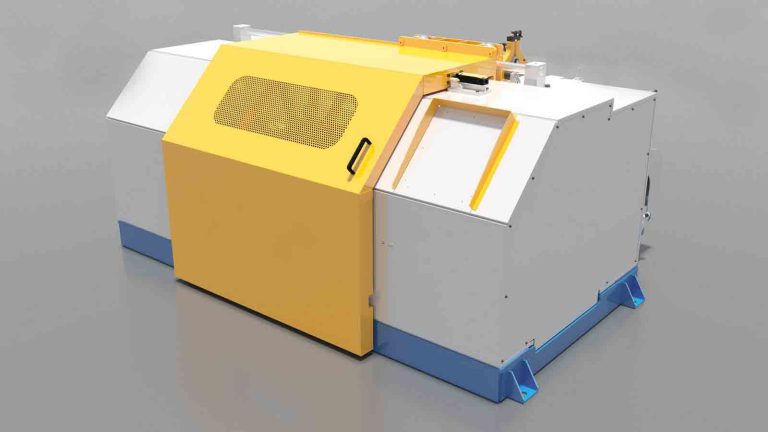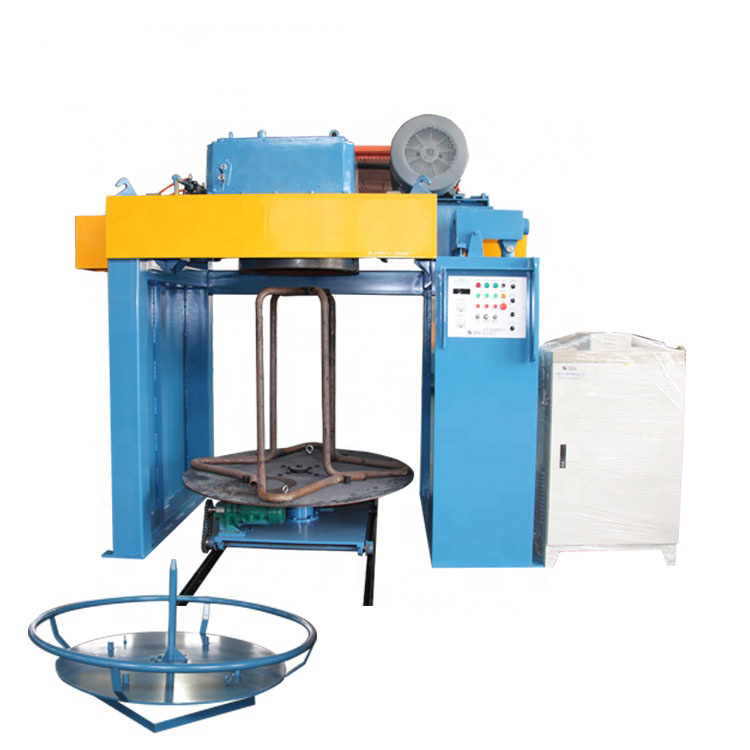How to Choose the Right Belt Descaler For Steel Wire Rod Surface Pre-Treatment
Descalers play a crucial role in the pre-treatment process of steel wire rod surfaces. They are used to remove oxides, scales, and other impurities from the surface of the wire rod, ensuring that it is clean and ready for further processing. Choosing the right descaler is essential to achieving the desired surface finish and ensuring the quality of the final product.

When selecting a descaler for steel wire rod surface pre-treatments, there are several factors to consider. The first consideration is the type of scale or oxide present on the surface of the wire rod. Different descalers are designed to remove specific types of impurities, so it is important to choose a descaler that is effective against the particular contaminants present on the wire rod.
Another important factor to consider when choosing a Belt descaling machine is the material of the wire rod. Different materials require different types of descalers to achieve optimal results. For example, stainless steel wire rods may require a different descaler than carbon steel wire rods. It is important to select a descaler that is compatible with the material of the wire rod to avoid damaging the surface of the wire rod.
In addition to considering the type of impurities and the material of the wire rod, it is also important to consider the environmental impact of the descaler. Some descalers contain harsh chemicals that can be harmful to the environment and pose health risks to workers. It is important to choose a descaler that is environmentally friendly and safe for use in the workplace.
One popular descaler for steel wire rod surface pre-treatments is citric acid. Citric acid is a mild and environmentally friendly descaler that is effective at removing oxides and scales from the surface of the wire rod. It is safe to use and does not pose health risks to workers. Citric acid descalers are also biodegradable, making them a sustainable choice for pre-treating steel wire rod surfaces.
Another popular descaler for steel wire rod surface pre-treatments is phosphoric acid. Phosphoric acid is a strong descaler that is effective at removing tough oxides and scales from the surface of the wire rod. However, phosphoric acid descalers can be harsh on the environment and pose health risks to workers. It is important to use phosphoric acid descalers with caution and ensure that proper safety measures are in place when handling them.

In conclusion, choosing the right descaler for steel wire rod surface pre-treatments is essential to achieving the desired surface finish and ensuring the quality of the final product. Factors to consider when selecting a descaler include the type of impurities present on the wire rod, the material of the wire rod, and the environmental impact of the descaler. Citric acid and phosphoric acid are popular descalers for steel wire rod surface pre-treatments, each with its own advantages and disadvantages. It is important to carefully consider these factors and choose a descaler that is effective, safe, and environmentally friendly for pre-treating steel wire rod surfaces.
Benefits of Using Descaler for Steel Wire Rod Surface Pre-Treatments
Descalers are an essential component in the steel wire rod surface pre-treatment process. They play a crucial role in removing scale, rust, and other impurities from the surface of the wire rod, ensuring that it is clean and ready for further processing. There are several benefits to using a Reversed Bending Descaler for drawing prepration process, which we will explore in this article.
One of the primary benefits of using a descaler is that it helps to improve the quality of the finished product. By removing scale and other impurities from the surface of the wire rod, the descaler ensures that the wire rod is free from defects and imperfections. This, in turn, results in a higher-quality finished product that meets the required specifications and standards.

In addition to improving the quality of the finished product, using a descaler also helps to increase the efficiency of the pre-treatment process. By removing scale and other impurities from the surface of the wire rod, the descaler allows for better adhesion of coatings and treatments, resulting in a more uniform and consistent finish. This not only saves time and resources but also ensures that the pre-treatment process is more effective and reliable.
Another benefit of using a descaler for steel wire rod surface pre-treatments is that it helps to extend the life of equipment and machinery. Scale and other impurities can cause damage to equipment and machinery over time, leading to increased maintenance costs and downtime. By removing these impurities from the surface of the wire rod, the descaler helps to protect equipment and machinery from damage, extending their lifespan and reducing maintenance costs.
Furthermore, using a descaler for steel wire rod surface pre-treatments can also help to improve the overall safety of the pre-treatment process. Scale and other impurities can create safety hazards in the workplace, such as slipping hazards or exposure to harmful chemicals. By removing these impurities from the surface of the wire rod, the descaler helps to create a safer working environment for employees, reducing the risk of accidents and injuries.
Overall, using a descaler for steel wire rod surface pre-treatments offers a wide range of benefits, including improved product quality, increased efficiency, extended equipment life, and enhanced safety. By investing in a high-quality descaler and incorporating it into the pre-treatment process, manufacturers can ensure that their finished products meet the required specifications and standards, while also reducing costs and improving workplace safety.
In conclusion, descalers are an essential component in the steel wire rod surface pre-treatment process, offering a range of benefits that can help to improve product quality, increase efficiency, extend equipment life, and enhance workplace safety. By incorporating a descaler into the pre-treatment process, manufacturers can ensure that their finished products meet the required specifications and standards, while also reducing costs and creating a safer working environment for employees.






